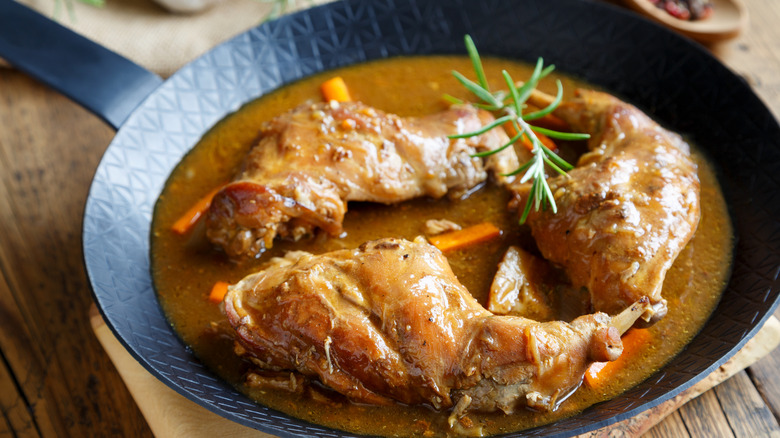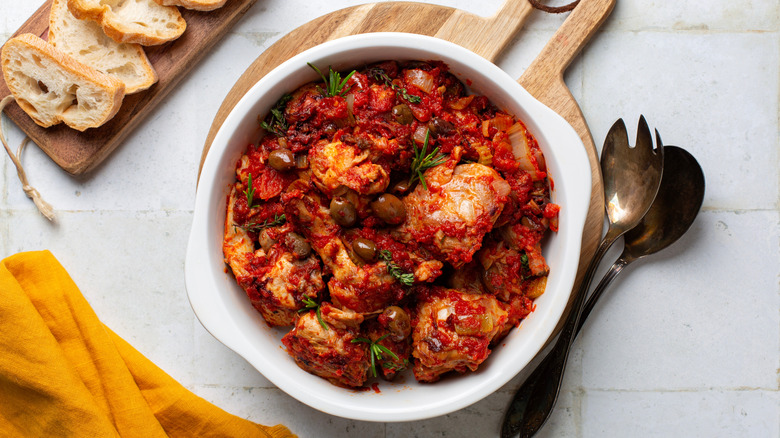What Does Rabbit Meat Really Taste Like?
While not so typical of American palettes, rabbit meat is actually eaten across the world and enjoyed by numerous cultures. But what does it actually taste like? The consensus is that it's a slightly gamier-tasting version of chicken — though different varieties have their own flavor profiles.
At risk of sounding too contrived by saying it tastes like chicken, the natural flavor of rabbit can fall under earthy and gamey. Think of it on the spectrum between chicken and lamb, leaning more towards chicken but with a hint of red meatiness. It's not as flat as chicken, and the meat is slightly sweeter.
Rabbit, wild or domesticated, is a white meat similar to poultry or fish. Because of this, the taste isn't as strongly 'meaty' as with beef, lamb (which you can make less gamey), or the is-it-red-is-it-white-ambiguous ham. Still, rabbit meat isn't quite as mild as poultry, and it has a tougher texture.
Wild rabbits produce generally more flavorful meat than farm-raised ones as a result of their more varied diet. They also have less fat, and the coloring is on the redder side. For domesticated rabbits, the meat is lighter in color and more tender, with higher concentrations of fat. In both varieties, the meat is surprisingly tough as rabbits have a lot of connective tissue that develops due to their active lifestyle. The more relaxed day-to-day of farm-bred rabbits mitigates this slightly, but you still need to cook rabbit meat with a low-and-slow approach.
How to cook rabbit
As far as the cuts of meat go, you can get a surprising amount of hearty, edible food from such a small animal. The hind legs produce the toughest meat and are perfectly edible — but do benefit most from slow braising. The loins are the most tender and easiest to cook, especially for beginners. The entire saddle region (extending from the rib cage to the hind legs and comprising both loins) is relatively easy to work with and absorbs a lot of flavor. The front legs are also possible to eat, but they don't produce a lot of meat and are better suited to stews and making stock. Lastly, the belly area is notably scant, leading many chefs to omit cooking it altogether. Still, some people prefer to cook rabbit whole, similar to how one would cook an entire roast chicken or turkey, and in this case, you can salvage some of the abdominal meat.
The older the rabbit, the tougher the texture of the meat, and the slower the cooking process will need to be. Generally, rabbits are divided into fryers (eight to 12 weeks old) and roasters (15 to 20 weeks old), meaning that younger rabbits can be fried or roasted — while older ones should only be roasted for best results.
Given its overall mild flavor, rabbit meat lends itself well to a variety of sauces and seasonings. Rabbit casseroles and stews are among the most popular dishes as the surrounding moisture ensures a hearty though tender texture while the gamey, earthiness of the meat still shines through.


